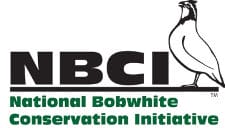By Don McKenzie, NBCI Director


Knoxville, TN -(Ammoland.com)- A solo birdwatching trip to an east Arkansas national wildlife refuge last weekend took me physically and mentally away from work’s reports, contracts and budgets.
Spotting scope and binoculars in hand, I anticipated that waterbirds and maybe even some early-dispersing shorebirds at this Mississippi Alluvial Valley refuge would be the day’s features. Instead, the surprise highlight was found among the numerous former crop fields that have been planted with tidy rows of bottomland hardwood trees.
Driving slowly along the gravel road, windows down and head out, listening, I heard an unusual but vaguely familiar bird song. Reflexively braking the truck, I stopped along a large field of young planted hardwoods that sported a robust native herbaceous community between the rows. A minute later the bird sang again, causing my mental hard drive to search its archives… darned if it didn’t sound just like a painted bunting, but that seemed too unlikely. I parked the truck, got out, listened and looked. Field sparrows, yellow-breasted chats, eastern towhees, dickcissels, and indigo buntings were singing all around … and a Bell’s vireo cut loose close by, the first of the year for me. Finally, as I was about to leave, the mystery bird sang again. I searched more intensely and finally found it, a painted bunting perched near the top of a young oak tree, singing its head off, brilliantly illuminated in the sunlight. I high-fived myself right there in the road, because PABUs are rare sightings for me; plus, who could ever tire of seeing them?!
That’s when the first bobwhite whistled. Then another; and another. I soon counted four bobwhites singing in that same area with the painted bunting along with all the other early-successional songbirds that typically share habitats with bobwhites. Some – such as the painted bunting, eastern towhee, field sparrow and Bell’s vireo – have Continental Concern Scores equal to or higher (worse) than the bobwhite’s, according to the Partners in Flight Species Assessment Database.
This memorable birding moment was a gratifying example of some of the NBCI’s core tenets:
- Habitat still makes bobwhites;
- Create enough of the right habitat in the right locations, and bobwhites likely will come and thrive, as will lots of their songbird neighbors;
- Wildlife managers have the technical knowledge and ability to restore bobwhites, as well as grassland and early successional birds.
This moment also illustrated a confounding dilemma of the societal challenges of bird conservation: the greater bird conservation community long ago decided that public conservation land in this particular region is not intended to benefit bobwhites. Nor migratory birds like painted buntings, field sparrows, or Bell’s vireos that share the bobwhite’s early successional and grassland habitats. Regardless of its demonstrable management potential for this set of priority early successional habitat species, this land has been deemed to be devoted to bottomland hardwoods and wetlands. With the realization of the planned obsolescence of this ephemeral-by-design habitat before me, the memorable moment turned bittersweet.
In about five years, this quality early successional habitat, and the community of priority resident and migratory birds that it supports at this location will be gone. Probably for good. Just as planned by the greater bird conservation community’s deliberate tradeoff.
And that final song of the last individual among these species at this site will demonstrate another core tenet of the NBCI: unmanaged or neglected bobwhite (and painted bunting, and field sparrow, and Bell’s vireo) habitat soon will grow out of it.
About the National Bobwhite Conservation Initiative (NBCI):
Headquartered at the University of Tennessee Institute of Agriculture’s Department of Forestry, Wildlife and Fisheries, NBCI is an initiative of the National Bobwhite Technical Committee (NBTC) to elevate bobwhite quail recovery from an individual state-by-state proposition to a coordinated, range-wide leadership endeavor. The committee is comprised of representatives of 25 state wildlife agencies, various academic research institutions and private conservation organizations. Support for NBCI is provided by the Federal Aid in Wildlife Restoration Program, state wildlife agencies, the University of Tennessee and Park Cities Quail.
For more information, please visit www.bringbackbobwhites.org and find us on Facebook, YouTube and Slideshare.
